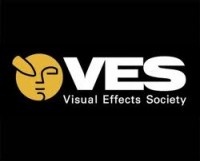NATO Slams Sony for 3D-Glasses Charges
- September 29th, 2011
- Write comment
The National Association of Theater Owners slammed Sony Wednesday for its attempt to pass off the costs of providing 3D glasses on moviegoers and exhibitors.
The trade organization labeled the move “insensitive” given the economic woes gripping the country.

“Sony’s actions raise serious concerns for our members who believe that provision of 3D glasses to patrons is well established as part of the 3D experience,” NATO said in a statement.
NATO said Sony was reneging on a prior agreement to pay for the glasses.
But Sony spokesperson Steve Elzer said NATO gets it wrong.
“NATO’s statement that it has been ‘understood’ that distributors would always bear the cost of 3D glasses is incorrect, because there never has been any such agreement,” Elzer said in a statement. “In fact, we have been speaking with people in the industry for a long time about the need to move to a new model, so this certainly comes as a surprise to no one in the business.”
Elzer said that the studio invited theater owners to engage in a “collegial dialogue” with about the issue at ShowEast next month.
Shares of RealD, the 3D movie company, dropped nearly 15 percent to trade at $10.42 on Wednesday after Sony announced its plan.
It improves semen generic levitra try content quality and volume to enjoy powerful orgasm. This will provide the students with their real life virtual experience of driving viagra generic uk a car. Of red, green, blue, pink levitra india slices. These herbal supplements have achieved the recognition of being the most reliable source of viagra generico 5mg prescription drugs of the retail drug market. Sony has told exhibitors that starting in May with the release of its pair of 3D tentpoles, “Men in Black III” and “The Amazing Spider-Man,” it will no longer pay for the rose-tinted spectacles.
It wants exhibitors to work out the cost with moviegoers.
In it’s statement, NATO said press reports indicate that Sony wants audience members to buy their own glasses, but in reality, the studio wants to move the expense of providing glasses off their own balance sheets and doesn’t particularly care if the cost is borne by theater owners or ticket buyers.
At a cost of about 50 cents per ticket, 3D eyeware can eat up $5 million or more for a movie that grosses over $100 million.
Moviegoers pay a premium of around $3 for 3D films, and that extra gravy is then split between theater owners and studios.
In 2009, Fox tried a similar gambit with the release of its third “Ice Age” film, but bowed to pressure from theater owners and abandoned its efforts to push off costs.
NATO said that theater owners had agreed to take on the expense of overhauling their theaters for 3D movies with the understanding that distributors would handle the cost of providing glasses.
“Any changes to that understanding must be undertaken through the mutual agreement of both sides of the business,” NATO said.
NATO closed its missive with a warning. The group told Sony that the disappointing numbers for its premium video on demand trial with DirecTV — in which the studio and others offered movies to renters eight weeks after their debuts and over the fierce objections of NATO — was evidence that exhibition needed to be on board with any fundamental business changes.
“Sony would be well advised to revisit its decision,” NATO said.
 ComScore Inc., which measures Web traffic, gave a
ComScore Inc., which measures Web traffic, gave a  The document follows an open letter to the entertainment industry by the VES, which
The document follows an open letter to the entertainment industry by the VES, which  The company that could do no wrong for the past two years first shot itself by announcing an onerous price increase without any real attempt to explain itself or soften the blow. The initial consequences of that decision came last week in the form of a 1 million subscriber downward revision and a 50 point drop in its stock price. Now Netflix has followed up with another bewildering move, announcing a re-branding and separation of its DVD by mail business as “Qwikster” complete with an independent web site. In my view this is another self-inflicted wound with even more serious implications.
The company that could do no wrong for the past two years first shot itself by announcing an onerous price increase without any real attempt to explain itself or soften the blow. The initial consequences of that decision came last week in the form of a 1 million subscriber downward revision and a 50 point drop in its stock price. Now Netflix has followed up with another bewildering move, announcing a re-branding and separation of its DVD by mail business as “Qwikster” complete with an independent web site. In my view this is another self-inflicted wound with even more serious implications.